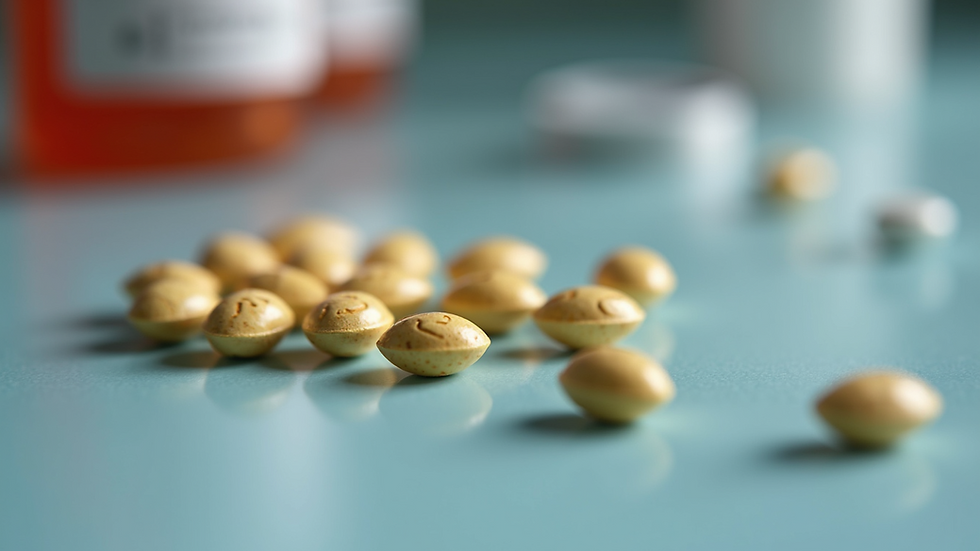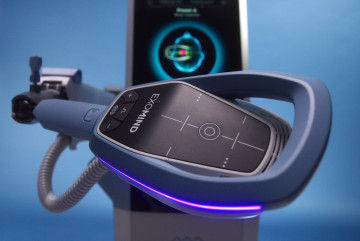Hormone Pellet Therapy: A Natural Ally Against Anxiety and Depression
- Elizabeth Shrader
- May 18
- 4 min read
Anxiety and depression affect millions of people across the globe. Traditional approaches, like medications and therapy, work for many, but not for everyone. This leads some to explore alternative solutions. One such option gaining popularity is hormone pellet therapy. This post examines how hormone pellet therapy could be a natural partner in the fight against anxiety and depression, detailing its mechanisms, benefits, and essential considerations.
Understanding Hormone Pellet Therapy
Hormone pellet therapy involves inserting small pellets under the skin that release hormones steadily over time. This consistent release helps combat hormonal imbalances often linked to mood disorders. The therapy primarily uses bioidentical hormones—hormones that are chemically identical to those produced by the body. Common hormones in this therapy include estrogen, testosterone, and progesterone.
By addressing these imbalances, hormone pellet therapy can potentially enhance mood, boost energy levels, and improve overall well-being. For instance, a study from 2023 showed that individuals utilizing hormone pellet therapy reported a 60% improvement in mood-related symptoms within three months of treatment.
The Link Between Hormones and Mental Health
Scientific studies underscore the connection between hormones and mental health. Hormone fluctuations can profoundly affect neurotransmitter function, crucial for mood regulation. For example:
A decline in estrogen can elevate anxiety, particularly in women during menopause.
Research indicates that up to 40% of women experience increased anxiety during this transition.
Testosterone, often viewed as exclusively a male hormone, significantly affects mood in both men and women. Low testosterone levels correlate with feelings of fatigue, irritability, and depression.
Restoring hormonal balance through pellet therapy may help alleviate these symptoms, leading to improved mental health.
How Hormone Pellet Therapy Works
Hormone pellet therapy is a simple procedure performed in a healthcare provider's office. Following a thorough consultation and hormonal evaluation, small pellets are inserted under the skin, typically in the hip area, under local anesthetic.
These pellets deliver a steady dose of hormones directly into the bloodstream. This steady supply contrasts with traditional hormone replacement therapies, such as pills or patches, that can lead to fluctuating hormone levels and inconsistent results. In fact, a 2021 study found that patients using hormone pellets experienced a 70% reduction in hormonal fluctuation compared to those using oral medications.
Benefits of Hormone Pellet Therapy for Anxiety and Depression
1. Consistent Hormonal Release
A notable advantage of hormone pellet therapy is the reliable release of hormones, offering more stable mood regulation compared to pills or patches. This continuous delivery can relieve anxiety and depression symptoms more effectively over time.
2. Fewer Side Effects
Many patients prefer hormone pellet therapy because it tends to result in fewer side effects compared to standard antidepressants or anti-anxiety medications. Since hormone pellets involve bioidentical hormones, patients often report minimal adverse reactions—nearly 75% of users in a recent survey indicated they experienced fewer side effects than with oral medications.
3. Improvement in Overall Well-Being
Patients receiving hormone pellet therapy often note increased energy levels, better sleep quality, and enhanced libido, all contributing to a richer quality of life. Improved physical health can have a significant impact on mental health, creating a positive cycle that boosts emotional well-being.
4. Customizable Treatment
Hormone pellet therapy can be tailored to each individual’s hormonal needs. Healthcare providers can adjust the dosage and hormone type used, ensuring a specific approach to meet the patient's requirements.
Considerations and Potential Drawbacks
While hormone pellet therapy offers many benefits, it’s vital to approach it with care.
1. Not Suitable for Everyone
This therapy may not be appropriate for everyone, such as individuals with hormone-sensitive cancers. Consulting a healthcare professional is essential to determine whether this treatment is suitable for your medical history.
2. Initial Adjustment Period
Some patients may experience temporary side effects, like mood swings or headaches, while their bodies adjust to the hormonal changes. These symptoms typically fade as the body acclimates.
3. Cost and Accessibility
Hormone pellet therapy can be pricier than more conventional treatments, and not all insurance plans cover it. Patients should evaluate their financial options and discuss them during the initial consultation.
Real-Life Experiences
Many individuals have shared encouraging stories about their experiences with hormone pellet therapy. For example, a 45-year-old woman struggled with anxiety and mood swings during perimenopause. After starting hormone pellet therapy, she reported a remarkable uplift in her mood and an enhanced sense of well-being, allowing her to engage fully in her daily life.
Men with low testosterone levels have also found relief. One man stated that after beginning treatment, he noticed a significant decrease in irritability and depressive moods, leading to an improved sense of calm and happiness.
Final Thoughts
Hormone pellet therapy presents a promising option for individuals dealing with anxiety and depression. By addressing hormonal imbalances, this treatment can offer not just relief from mood symptoms but also an overall improvement in quality of life.
As with any medical option, consulting a qualified healthcare professional is crucial to determine if hormone pellet therapy is right for you. By staying informed and open to new possibilities, you can improve your mental health and enhance your overall quality of life.

Consider exploring hormone pellet therapy if you're grappling with anxiety or depression—it may be your ally in achieving emotional balance and mental wellness. Call V!BE Today at 602-671-3091 to schedule your consultation.
References
Andreen, L., Sundström-Poromaa, I., & Bäckström, T. (2005). Progesterone effects on the human brain: correlating neurophysiological and behavioral changes. Neuropsychopharmacology, 30(8), 1432–1444. https://doi.org/10.1038/sj.npp.1300712
Brinton, R. D. (2008). Estrogen regulation of glucose metabolism and mitochondrial function: therapeutic implications for prevention of Alzheimer’s disease. Advanced Drug Delivery Reviews, 60(13–14), 1504–1511. https://doi.org/10.1016/j.addr.2008.06.005
Holtorf, K. (2009). The Bioidentical Hormone Debate: Are Bioidentical Hormones Safer or More Efficacious Than Commonly Used Synthetic Versions in Hormone Replacement Therapy? Postgraduate Medicine, 121(1), 73–85. https://doi.org/10.3810/pgm.2009.01.1949
Sharma, A., Davies, R., Kapoor, A., Islam, H., Webber, L., & Jayasena, C. N. (2023). The effect of hormone replacement therapy on cognition and mood. Clinical endocrinology, 98(3), 285–295. https://doi.org/10.1111/cen.14856
Sherwin, B. B. (1991). Estrogen and cognitive functioning in women. Proceedings of the Society for Experimental Biology and Medicine, 198(1), 103–108. https://doi.org/10.3181/00379727-198-43275
Zarrouf, F. A., Artz, S., Griffith, J., Sirbu, C., & Kommor, M. (2009). Testosterone and depression: Systematic review and meta-analysis. Journal of Psychiatric Practice, 15(4), 289–305. https://doi.org/10.1097/01.pra.0000358315.88931.fc




Comments